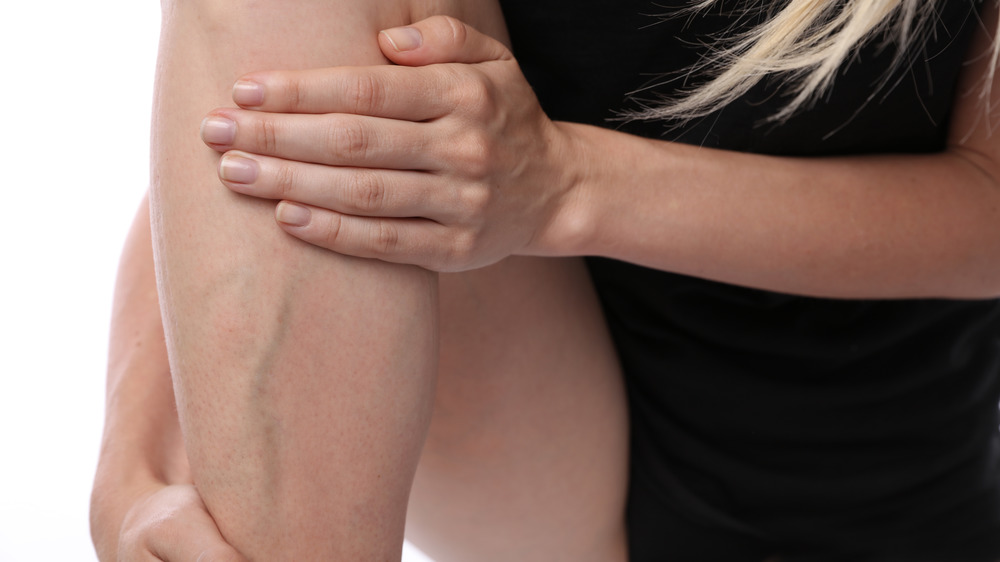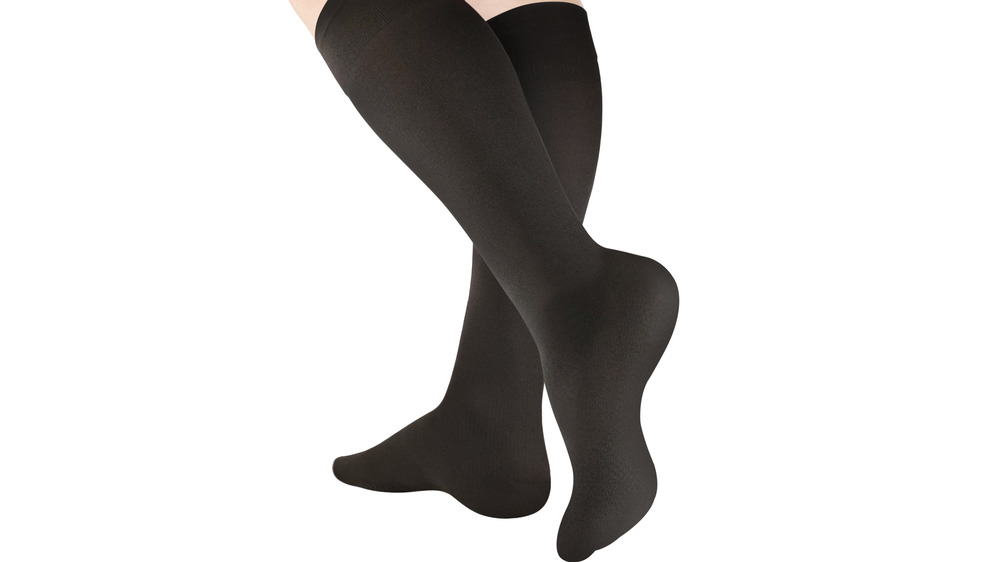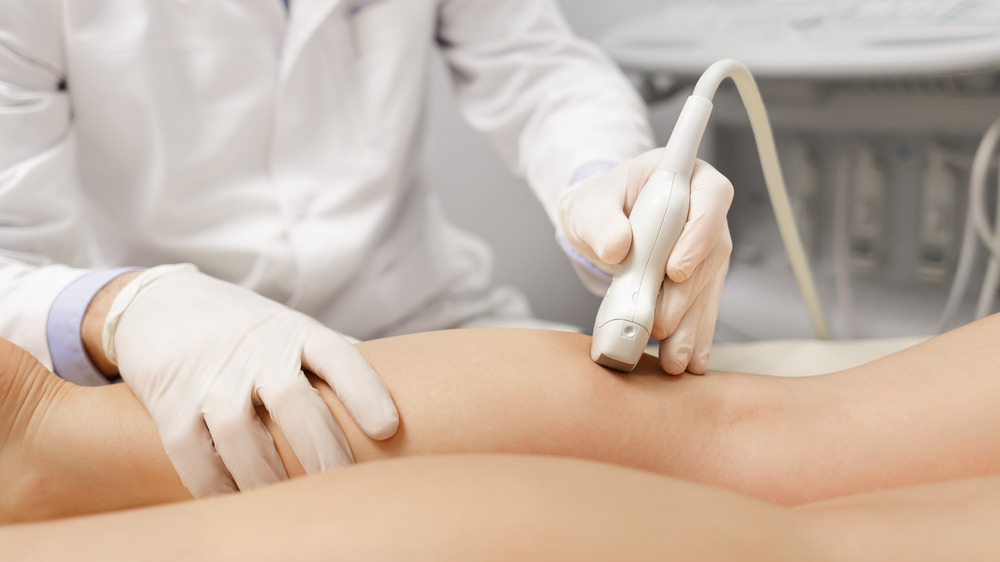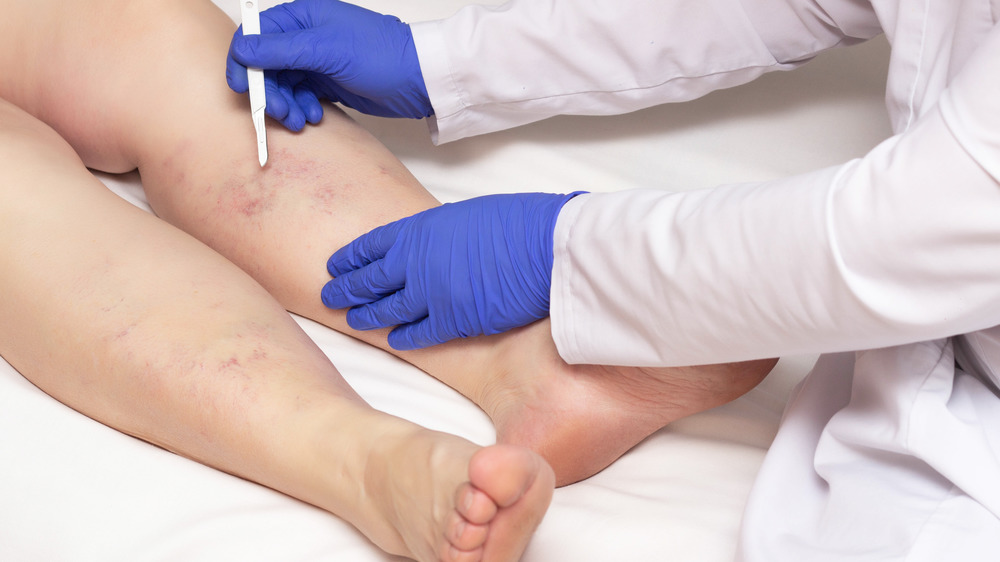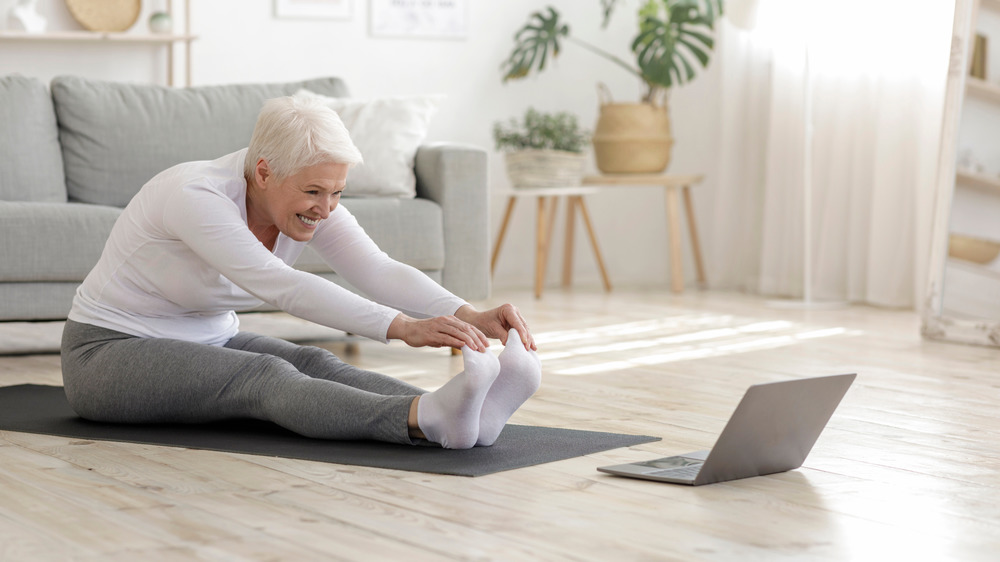Why Now Is The Best Time To Treat Varicose Veins And Spider Veins
One of the best things about winter is the fact that 90 percent of our bodies are covered up by layers and layers of clothing. Who knows what's going on under there? A few extra pounds, legs not shaved since Christmas ... who cares? If one of the things you're covering up, however, is some incipient (or not-so-incipient) varicose veins, you may want to think again about letting those slide till spring.
If you're thinking, whoa, aren't varicose veins, like, a grandma thing, you may be in for an unpleasant surprise. As Raffy Karamanoukian, MD, told RealSelf, varicose veins frequently begin in the mid-twenties. They are a frequent side-effect of pregnancy, and can also be caused by wearing tight clothing or even poor posture. What's more, women with a pear shape (wider on the bottom) tend to be more prone to vein problems. Spider veins are another problem that can occur a lot earlier than you'd think — Advanced Vein Centers says women in their teens can develop this condition. Should you suspect any varicose or spider veins may be hiding under your winter fur, Dr. Jeffrey Apple, MD, a board-certified vascular surgeon at Austin's VeinSolutions, says it's better to treat those now than to wait till the weather warms up.
Why vein treatments are better in wintertime
So why should you make arrangements to have any unsightly vein issues treated while winter is still upon us? Is it because no-one will see your legs while you're recovering from whatever such treatments might entail? Well, this does play a part in it. Apple says that after vein surgery, compression stockings must be worn for several weeks in order to help promote circulation and reduce any discomfort, and as he points out, this non-sexy hosiery is "much more manageable and less noticeable in the winter when [it] can be worn under pants. "
Yet another reason to seek treatment during the cooler months of the year is because during this time our bodies don't tend to swell as much as they do when the weather is warmer. "In the summer," warns Apple, "harmful UV rays can also cause veins to dilate, which can lead to blood pooling and even reverse the effects of treatment."
There are several non-surgical options open to you
Apple told us about one of the newest non-surgical vein treatments out there, a simple in-office procedure called VenaSeal that uses medical glue to seal off damaged veins. The glue is applied with a thin syringe followed by light compression that spreads it throughout the vein. Once the vein is sealed off like this, it will just be re-absorbed into the body and the blood will continue to flow through healthy, non-damaged veins. This treatment is so non-invasive that it only takes a day or two to recover, and you may not even have to wear the compression stockings — just a small bandage could suffice.
Another process is endovenous ablation, where heat, rather than glue, is used to seal the veins. It requires local anesthesia and will require that stockings be worn afterwards. Should all go well, though, you'll be back to normal activities within a day or so, though with both procedures you should stay away from any prolonged sessions of sitting or standing and you should also avoid any strenuous exercise or heavy lifting for about a week.
Yet another option is sclerotherapy, used to treat both spider and varicose veins. This process involves injecting veins with a chemical solution that will cause them to break down and dissolve on their own. It's also minimally invasive, and patients can often return to regular activities immediately after receiving this treatment, though compression stockings should be work for 48 hours afterwards.
Minimally-invasive surgery may be needed
If your varicose veins are on the large side, or if you try a non-surgical procedure such as the ones named above with no success, you may need to schedule a surgical treatment. Apple says a phlebectomy can solve your vein problems, and explains it to us as follows: "anesthesia is applied to the affected areas, and then a tiny instrument is threaded through a small puncture and the damaged veins are gently pulled through the puncture, and then blood flow is automatically rerouted through healthier ones." While it may sound a little scary, he assures that no stitches will be required and that the punctures will be barely visible.
After this surgery compression stockings will need to be worn, but usually phlebectomy patients are up and about within 24 hours. As with the non-surgical treatments, however, it's best to avoid either prolonged sitting or standing as well as workouts, swimming, or lifting anything heavy for a week after the surgery.
Varicose vein prevention tips
If you've yet to develop varicose or spider veins, you may not be able to prevent them happening in the future, but you can still try your darnedest to hold them off as long as possible. Apple says that maintaining a healthy weight should help your veins stay in shape, and getting adequate exercise helps, as well. You should also try not to either sit or stand for too long at a time. Should your job require either activity, at least try to take a little walk, move back and forth a bit, get up and stretch, or do anything else you can do to avoid the circulation problems that may come from staying in one position for too long.
Diet, of course, can also play a role in maintaining healthy veins. In addition to avoiding excessive weight gain, you should try to avoid excess sodium since too much sodium will increase water retention, something that isn't good for your veins. Instead, try to eat foods that are high in fiber, vitamin C, and potassium.
